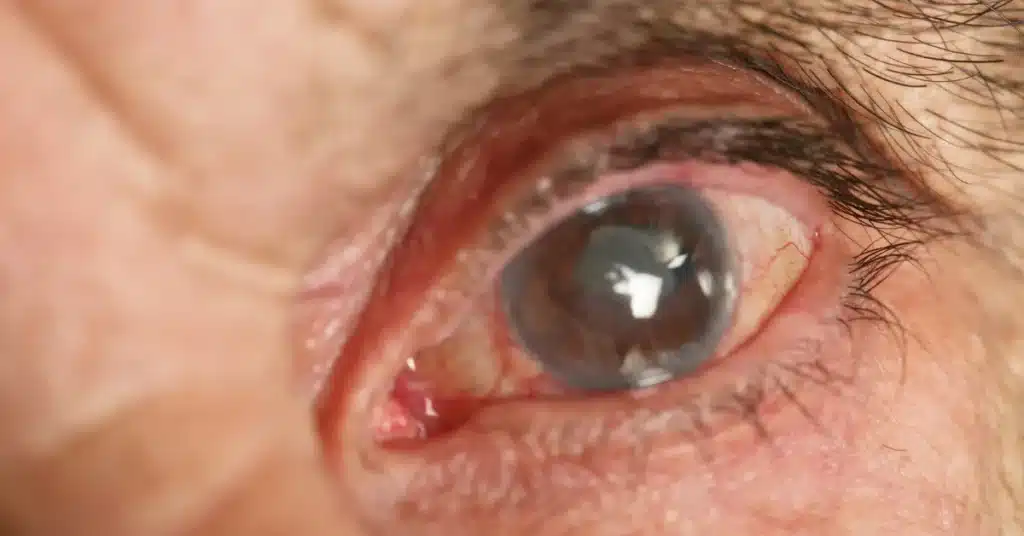Glaucoma Eye Drops Side Effects: Things to Keep in Mind
Glaucoma is a complex eye condition that requires diligent management to prevent vision loss.
One of the primary treatments for Glaucoma involves the use of eye drops, which aim to lower intraocular pressure and slow down the progression of the disease.
The kind of eye drops prescribed depends upon the type of Glaucoma diagnosed.
However, like any medication, Glaucoma eye drops come with potential side effects that patients should be aware of.
Understanding the possible adverse reactions to these medications is crucial to enable informed decision-making.
Moving ahead in this article, we will learn in detail about Glaucoma eye drops side effects, both common and uncommon.
Common side effects of Glaucoma eye drops
When used as prescribed, Glaucoma medications do not typically cause any complications.
However, some commonly observed adverse effects of these eye drops include the following:
Glaucoma eye drops side effects depend upon the kind of medication that your doctor has recommended. Consult them for a deeper understanding of the possible adverse effects of your prescription.
Eye irritation
One of the most common side effects of Glaucoma eye drops is mild eye irritation.
Patients may experience a burning or stinging sensation upon applying the medication.
This discomfort is usually temporary and tends to diminish as the eyes become accustomed to the drops.
Redness and allergic reactions

Some individuals may develop redness or allergic reactions to the eye drops, including itching, tearing, and swelling.
If you experience these symptoms, it is essential to contact your eye care provider promptly.
Blurred vision
Blurred vision can occur shortly after using Glaucoma eye drops.
This effect is typically transient and should not impair your ability to perform daily activities.
If the blurriness persists, consult your eye doctor.
Changes in eye color and eyelash growth
Prostaglandin analogs like Bimatoprost have been known to cause changes in eye color, making brown eyes appear more brown.
Additionally, they may promote eyelash growth, which can be a desirable side effect for some individuals.
Less common side effects
Some less commonly experienced Glaucoma eye drops side effects are discussed below.
Systemic effects
Some of the medications used in Glaucoma eye drops can be absorbed into the bloodstream, potentially leading to systemic side effects.
These can include heart rate changes, Low Blood Pressure, and breathing difficulties.
However, such effects are rare and typically occur when a significant amount of the medication is absorbed systemically.
Dry eyes
Glaucoma eye drops can disrupt the natural tear film, leading to dryness in some patients.
If you experience persistent dry eyes, consult your eye care provider for guidance on managing this side effect.
Eyelid skin darkening
Prolonged use of Prostaglandin Analogs may cause darkening of the skin on the eyelids, particularly in individuals with lighter skin tones.
Corneal complications
Although rare, some Glaucoma eye drops can lead to corneal complications, such as swelling or changes in the cornea’s surface.
Regular follow-ups with your eye doctor can help detect and manage these issues early.
Severe and rare side effects
Rare occurrences of these side effects have also been seen in cases of Glaucoma eye drops.
Allergic reaction
While allergic reactions to Glaucoma eye drops are common, they may be severe in rare cases.
Symptoms might include severe eye swelling, difficulty breathing, and hives.
Seek immediate medical attention if you experience any signs of a severe allergic reaction.
Cataract formation
Long-term use of certain Glaucoma eye drops, particularly corticosteroids, may increase the risk of Cataract development.
Regular eye exams can help monitor for this potential side effect.
Other side effects of Glaucoma eye drops

Other observable Glaucoma eye drops side effects include:
- Headache
- Dry mouth
- Feeling tired, weak, or dizzy
- Increase in blood pressure
- Change in taste
- Upset stomach
- Light sensitivity
Conclusion
It is essential to be aware of the potential Glaucoma eye drops side effects associated with these medications.
Many side effects are mild and manageable and include irritation, itching, changes in the color of the eyes, etc.
In some cases, adverse effects such as dryness in the eyes, eyelid pigmentation, allergic reactions, and shortness of breath can also be observed.
As a patient, it’s crucial to maintain open communication with your eye care provider throughout your Glaucoma treatment journey.
They can monitor your progress, adjust your medication if needed, and address any possible side effects.
Read Protecting Your Vision: How to Prevent Glaucoma for a comprehensive understanding of ways you can prevent this condition.
Frequently Asked Questions
Can Glaucoma eye drops damage your eyes?
Glaucoma eye drops typically don’t damage the eyes when used as prescribed. However, they may have side effects, such as dryness, itching, and redness of the eyes. In some cases, blurry vision and eyelash growth are also observed. Hence, regular monitoring by an eye care professional is essential.
How can I reduce the side effects of Glaucoma drops?
To reduce the side effects of Glaucoma drops, follow your doctor’s instructions meticulously. Additionally, maintain good eye hygiene, and inform your healthcare provider of any adverse reactions promptly.
Which eye drops for Glaucoma have the least side effects?
Prostaglandin analogs like Latanoprost often have fewer side effects and are generally well-tolerated compared to other Glaucoma eye drops, making them a preferred choice for many patients. However, it is advised to consult a professional to guide you based on your individual condition and medical history.
Can Glaucoma be stopped with drops?
Glaucoma eye drops can help manage the condition and slow its progression, but they may not stop it entirely. Regular use and monitoring are crucial in achieving the best results in preserving your vision.
WowRx uses only high-quality sources while writing our articles. Please read our content information policy to know more about how we keep our content reliable and trustworthy.






